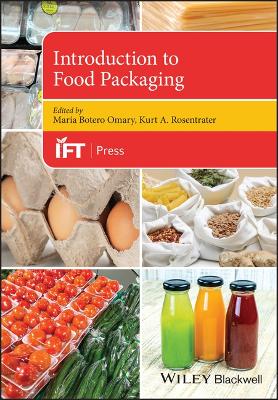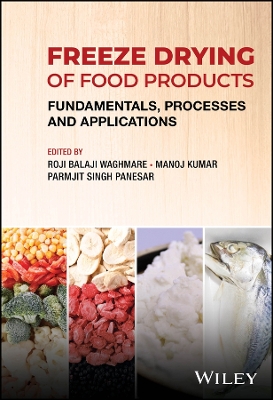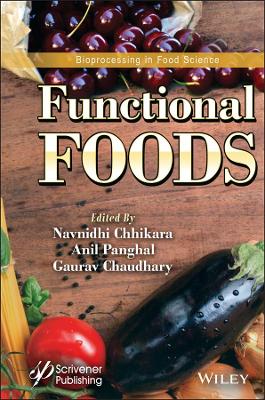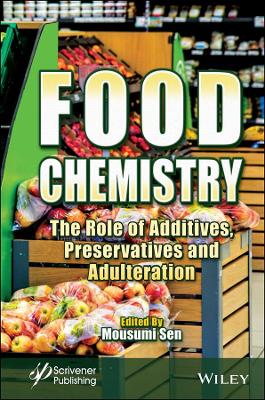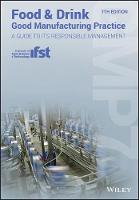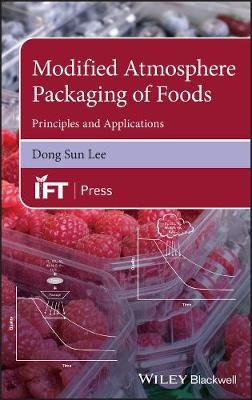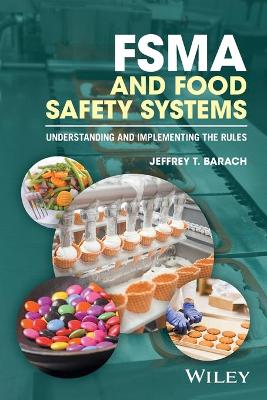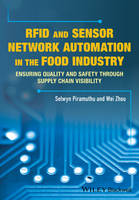Essential Oils in Food Processing: Chemistry, Safety and Applications
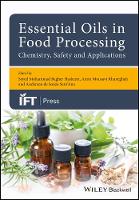 -15%
portes grátis
-15%
portes grátis
Essential Oils in Food Processing: Chemistry, Safety and Applications
Bagher Hashemi, Seyed Mohammed; Mousavi Khaneghah, Amin; de Souza Sant'Ana, Anderson
John Wiley and Sons Ltd
12/2017
392
Dura
Inglês
9781119149347
15 a 20 dias
908
Acknowledgements xv
Introduction xvii
1 Essential Oils and Their Characteristics 1
M.C.T. Duarte, R. Duarte, R.A.F. Rodrigues and M.V.N. Rodrigues
1.1 Introduction 1
1.1.1 Chemical Characteristics of Essential Oils 1
1.1.2 Factors Influencing the Quantity and Quality of Essential Oil in Plants 8
1.1.3 Pathogens Attack 8
1.1.4 Environmental Factors 9
1.1.5 Hydric Stress 12
1.1.6 Plant Nutrition 13
1.1.7 Genetic Factors and Chemical Diversity 14
1.2 Conclusions 15
References 15
2 Extraction Methods of Essential Oils From Herbs and Spices 21
Shahin Roohinejad, Mohamed Koubaa, Francisco J. Barba, Sze Ying Leong, Anissa Khelfa, Ralf Greiner and Farid Chemat
2.1 Introduction 21
2.2 Conventional Methods of Extraction 22
2.2.1 Hydrodistillation 22
2.2.2 Steam Distillation 27
2.2.3 Solvent Extraction 28
2.3 Novel Extraction Methods 32
2.3.1 Supercritical Fluid Extraction 32
2.3.2 Ultrasound-Assisted Extraction 34
2.3.2.1 Ultrasound-Assisted Solvent Extraction 34
2.3.2.2 Combination of UAE with Other Techniques 35
2.3.3 Ohmic-Assisted Hydrodistillation 37
2.3.4 Pulsed Electrical-Assisted Extraction 38
2.3.5 Microwave-Assisted Extraction 40
2.3.5.1 Vacuum Microwave Hydrodistillation (VWHD) 40
2.3.5.2 Microwave Hydrodiffusion and Gravity (MHG) 42
2.3.5.3 Solvent-Free Microwave Extraction (SFME) 43
2.4 Conclusions 44
Acknowledgements 44
References 45
3 Identification of Essential Oil Components 57
Elena E. Stashenko and Jairo Rene Martinez
3.1 Introduction 57
3.2 Essential Oils as Multicomponent Complex Mixtures 59
3.2.1 Classification and Main Components 59
3.2.2 Compositional Variation and Dependence on Internal and External Factors 61
3.2.3 Essential Oil Isolation and Preparation for Chromatographic Analysis 62
3.3 Essential Oil Component Identification 65
3.3.1 Gas Chromatography 67
3.3.1.1 Columns 70
3.3.1.2 Injection Systems 71
3.3.1.3 Detection Systems 72
3.3.2 Retention Indices 77
3.3.3 Mass Spectrometry 82
3.3.3.1 Ionisation Processes 83
3.3.3.2 Ion Types and Fragmentation Patterns 84
3.3.3.3 Mass Spectra Interpretation 85
3.3.4 Hyphenated Techniques 95
3.4 GC-MS 95
3.4.1 Tandem Methods 103
3.4.2 Multidimensional and Comprehensive Techniques 106
3.5 Isolation of Individual Components or Enriched Fractions 110
3.6 Conclusions 111
References 112
4 Chemical Composition of Essential Oils 119
Hassan Eslahi, Nafiseh Fahimi and Ali Reza Sardarian
4.1 Introduction 119
4.2 Chemical Composition of Essential Oils 124
4.2.1 Terpenes and Terpenoids 124
4.2.2 Aromatic Compounds 127
4.3 Synthesis and Biosynthesis of Essential Oils 127
4.3.1 Terpenes and Terpenoids 130
4.3.2 Sesquiterpenes and Sesquiterpenoids 147
4.3.3 Aromatic Compounds 154
4.4 Effective Factors on the Composition of Essential Oils 155
References 157
5 Basic Structure, Nomenclature, Classification and Properties of Organic Compounds of Essential Oil 173
Iuliana Vintila
5.1 Introduction 173
5.1.1 Antioxidant Properties 177
5.1.1.1 DPPH Assay 178
5.1.1.2 The Bleaching Assay 181
5.1.2 Anti-Microbial and Anti-Viral Activity 182
5.1.3 Anti-Aflatoxigenic Activity 182
5.1.4 Anti-Inflammatory, Analgesic, Antipyretic, Pro-Kinetic and Pro-Immunity Activity (Pharmacologic Properties) 182
5.1.5 Anti-Carcinogenic and Cytotoxicity Activity 183
5.2 Final
Conclusions 183
References 187
6 Antimicrobial Activity of Essential Oil 191
Saeedeh Shojaee-Aliabadi, Seyede Marzieh Hosseini and Liela Mirmoghtadaie
6.1 Chemical Composition of Essential Oils 191
6.1.1 Terpene Origin Compounds 191
6.1.2 Aromatic Compounds 193
6.2 Antimicrobial Activity of Essential Oils 193
6.3 Synergistic and Antagonism Effect of Essential Oils with Other Antimicrobials 206
6.4 Interaction Between Essential Oils and Essential Oils with Other Food Antimicrobials 207
6.5 Food Packaging Containing Essential Oils 207
6.5.1 Antimicrobial Activity of Packaging Containing Essential Oils 207
6.5.1.1 Biopolymers 208
6.5.1.2 Synthetic Polymers 209
6.5.2 Antimicrobial Activity of Packaging in Vapor Phase 210
6.5.3 Release Properties of Essential Oils From Packaging 211
6.6 Encapsulation of Essential Oils 212
6.7 Application of Essential Oils as Antimicrobial Agents in Different Food Products 214
6.7.1 Bakery Products 214
6.7.2 Dairy Products 216
6.7.3 Meat Products 217
6.7.4 Fruits and Vegetables 218
6.7.5 Others 219
References 219
7 Bioactivity of Essential Oils Towards Fungi and Bacteria: Mode of Action and Mathematical Tools 231
Antonio Bevilacqua, Barbara Speranza, Marianne Perricone, Milena Sinigaglia and Maria Rosaria Corbo
7.1 The Main Traits of Essential Oils 231
7.2 Antibacterial Activity of EOs 233
7.2.1 Effect on Cell Morphology 234
7.2.2 Disruption of the Outer Membrane of Gram-Negative Bacteria 235
7.2.3 Effect on the Cytoplasmatic Membrane 235
7.2.4 Homeostasis, Enzymes and Other Activities 235
7.2.5 Changes in Proteome and Transcriptome 236
7.2.6 EOs and Bacterial Spores 236
7.3 Antifungal Activity of EOs 237
7.4 Mathematical Tools 237
7.4.1 Bacteria and Yeasts 237
7.4.2 Filamentous Fungi 239
7.4.3 Fractional Inhibitory Index 241
References 241
8 Antioxidant Activity of Essential Oils in Foods 247
Seyed Mohammad Bagher Hashemi, Shima Bazgir Khorram and Maryam Sohrabi
8.1 Introduction 247
8.2 In Vitro Antioxidant Activity of Essential Oils 248
8.3 Edible Oils and Fats 250
8.4 Meat and Poultry Products 257
8.5 Dairy Products 260
8.6 Conclusions 261
References 261
9 Mode of Antioxidant Action of Essential Oils 267
Riccardo Amorati and Mario C. Foti
9.1 Introduction 267
9.2 Lipid Oxidation and Antioxidant Activity of Chemical Compounds 269
9.3 Methods for Determining the Antioxidant Properties of Chemicals 274
9.3.1 Autoxidation of a Substrate 275
9.3.2 TBARS (Thiobarbituric Acid Reactive Species) 275
9.3.3 The Rancimat Test 276
9.3.4 ORAC Assay 276
9.3.5 DPPH Test 276
9.4 Antioxidant Activity of Essential Oils 277
9.4.1 Essential Oils Components 277
9.4.2 Antioxidant Activity of Essential Oils 280
9.4.3 Antioxidant Activity of Films, Edible Coatings and Nanomaterials Containing EOs 283
9.5 Antioxidant Activity of EOs in Real Food Samples 284
9.5.1 EOs Directly Added to Food 284
9.5.1.1 Fish 284
9.5.1.2 Meat 284
9.5.1.3 Oil 285
9.5.2 EOs in Modified Atmosphere Packaging 285
9.5.3 Edible Coatings 287
9.6 Conclusions 287
References 287
10 Principles of Sensory Evaluation in Foods Containing Essential Oil 293
Emma Mani-Lopez, Ana Cecilia Lorenzo-Leal, Enrique Palou and Aurelio Lopez-Malo
10.1 Introduction 293
10.2 Sensory Aspects of Essential Oils 294
10.2.1 Selected Examples 295
10.3 Desirable Applications of Essential Oils and Their Relation with Sensory Analysis 296
10.3.1 Antimicrobial Applications 296
10.3.2 Antioxidant Applications 296
10.3.3 Other Applications 297
10.4 The Relationship Between Composition of Essential Oils and Sensory Properties 297
10.5 Factors Influencing Sensory Measurements 300
10.5.1 Physiological Factors 300
10.5.2 Psychological Considerations 300
10.5.3 Other Factors 302
10.6 Selection and Training of Panelists 303
10.6.1 Panelists for Descriptive Testing 303
10.6.2 Trained Descriptive Panel 304
10.6.3 Selection and Training of Panelists for Discrimination Tests 305
10.7 Sample Preparation 305
10.8 Sensory Analysis Methods 309
10.9 Descriptive Tests 310
10.10 Discrimination Tests 313
10.11 Time-Intensity Methods 315
10.12 Preference Tests 315
10.13 Sensory Analysis Reports 316
10.14 New Approaches to Reduce Undesirable Sensory Effects of Essential Oils 320
References 320
11 Global Regulation of Essential Oils 327
Ismail Es, Amin Mousavi Khaneghah and Hamid Akbariirad
11.1 Introduction 327
11.2 Global Institutions Involved in Essential Oil Regulation 328
11.2.1 World Health Organisation (WHO) 329
11.2.2 Food and Agriculture Organisation of the United Nations (FAO) 330
11.2.3 FAO/WHO Codex Alimentarius Commission (CAC) 332
11.2.4 International Organisation for Standardisation (ISO) 332
11.2.5 Food and Drug Administration (FDA) 333
11.2.6 EU Commission 335
11.2.7 United States Department of Agriculture (USDA) 335
11.2.8 Essential Oil Association of the United States (EOA) 336
11.2.9 Australian Regulatory 336
11.2.10 Canadian Food and Drug Regulation 336
11.2.11 The American Essential Oil Trade Association (AEOTA) 336
11.2.12 The International Federation of Essential Oils and Aroma Trades (IFEOAT) 336
11.3 Conclusion 337
References 337
12 Safety Evaluation of Essential Oils 339
Ramadasan Kuttan and Vijayasteltar B. Liju
12.1 Introduction 339
12.1.1 Use and Applications of Essential Oils 340
12.2 Essential Oils and General Safety 340
12.3 Safety of Essential Oils Used in Cosmetics and Industrial Applications 341
12.4 Safety of Essential Oils Used in Agriculture 342
12.5 Topical Administration of Essential Oils - Safety Issues 343
12.5.1 Essential Oils and Aromatherapy 343
12.6 Essential Oils and Eye Safety 344
12.7 Phototoxicity of Essential Oils 344
12.8 Acute and Sub-Chronic Oral Toxicity of Essential Oils 345
12.9 Constituents-Based Toxicity Evaluation of Essential Oils 346
12.10 Genotoxicity and Carcinogenicity of the Essential Oils 349
12.11 Conclusion 350
References 351
Index 359
Acknowledgements xv
Introduction xvii
1 Essential Oils and Their Characteristics 1
M.C.T. Duarte, R. Duarte, R.A.F. Rodrigues and M.V.N. Rodrigues
1.1 Introduction 1
1.1.1 Chemical Characteristics of Essential Oils 1
1.1.2 Factors Influencing the Quantity and Quality of Essential Oil in Plants 8
1.1.3 Pathogens Attack 8
1.1.4 Environmental Factors 9
1.1.5 Hydric Stress 12
1.1.6 Plant Nutrition 13
1.1.7 Genetic Factors and Chemical Diversity 14
1.2 Conclusions 15
References 15
2 Extraction Methods of Essential Oils From Herbs and Spices 21
Shahin Roohinejad, Mohamed Koubaa, Francisco J. Barba, Sze Ying Leong, Anissa Khelfa, Ralf Greiner and Farid Chemat
2.1 Introduction 21
2.2 Conventional Methods of Extraction 22
2.2.1 Hydrodistillation 22
2.2.2 Steam Distillation 27
2.2.3 Solvent Extraction 28
2.3 Novel Extraction Methods 32
2.3.1 Supercritical Fluid Extraction 32
2.3.2 Ultrasound-Assisted Extraction 34
2.3.2.1 Ultrasound-Assisted Solvent Extraction 34
2.3.2.2 Combination of UAE with Other Techniques 35
2.3.3 Ohmic-Assisted Hydrodistillation 37
2.3.4 Pulsed Electrical-Assisted Extraction 38
2.3.5 Microwave-Assisted Extraction 40
2.3.5.1 Vacuum Microwave Hydrodistillation (VWHD) 40
2.3.5.2 Microwave Hydrodiffusion and Gravity (MHG) 42
2.3.5.3 Solvent-Free Microwave Extraction (SFME) 43
2.4 Conclusions 44
Acknowledgements 44
References 45
3 Identification of Essential Oil Components 57
Elena E. Stashenko and Jairo Rene Martinez
3.1 Introduction 57
3.2 Essential Oils as Multicomponent Complex Mixtures 59
3.2.1 Classification and Main Components 59
3.2.2 Compositional Variation and Dependence on Internal and External Factors 61
3.2.3 Essential Oil Isolation and Preparation for Chromatographic Analysis 62
3.3 Essential Oil Component Identification 65
3.3.1 Gas Chromatography 67
3.3.1.1 Columns 70
3.3.1.2 Injection Systems 71
3.3.1.3 Detection Systems 72
3.3.2 Retention Indices 77
3.3.3 Mass Spectrometry 82
3.3.3.1 Ionisation Processes 83
3.3.3.2 Ion Types and Fragmentation Patterns 84
3.3.3.3 Mass Spectra Interpretation 85
3.3.4 Hyphenated Techniques 95
3.4 GC-MS 95
3.4.1 Tandem Methods 103
3.4.2 Multidimensional and Comprehensive Techniques 106
3.5 Isolation of Individual Components or Enriched Fractions 110
3.6 Conclusions 111
References 112
4 Chemical Composition of Essential Oils 119
Hassan Eslahi, Nafiseh Fahimi and Ali Reza Sardarian
4.1 Introduction 119
4.2 Chemical Composition of Essential Oils 124
4.2.1 Terpenes and Terpenoids 124
4.2.2 Aromatic Compounds 127
4.3 Synthesis and Biosynthesis of Essential Oils 127
4.3.1 Terpenes and Terpenoids 130
4.3.2 Sesquiterpenes and Sesquiterpenoids 147
4.3.3 Aromatic Compounds 154
4.4 Effective Factors on the Composition of Essential Oils 155
References 157
5 Basic Structure, Nomenclature, Classification and Properties of Organic Compounds of Essential Oil 173
Iuliana Vintila
5.1 Introduction 173
5.1.1 Antioxidant Properties 177
5.1.1.1 DPPH Assay 178
5.1.1.2 The Bleaching Assay 181
5.1.2 Anti-Microbial and Anti-Viral Activity 182
5.1.3 Anti-Aflatoxigenic Activity 182
5.1.4 Anti-Inflammatory, Analgesic, Antipyretic, Pro-Kinetic and Pro-Immunity Activity (Pharmacologic Properties) 182
5.1.5 Anti-Carcinogenic and Cytotoxicity Activity 183
5.2 Final
Conclusions 183
References 187
6 Antimicrobial Activity of Essential Oil 191
Saeedeh Shojaee-Aliabadi, Seyede Marzieh Hosseini and Liela Mirmoghtadaie
6.1 Chemical Composition of Essential Oils 191
6.1.1 Terpene Origin Compounds 191
6.1.2 Aromatic Compounds 193
6.2 Antimicrobial Activity of Essential Oils 193
6.3 Synergistic and Antagonism Effect of Essential Oils with Other Antimicrobials 206
6.4 Interaction Between Essential Oils and Essential Oils with Other Food Antimicrobials 207
6.5 Food Packaging Containing Essential Oils 207
6.5.1 Antimicrobial Activity of Packaging Containing Essential Oils 207
6.5.1.1 Biopolymers 208
6.5.1.2 Synthetic Polymers 209
6.5.2 Antimicrobial Activity of Packaging in Vapor Phase 210
6.5.3 Release Properties of Essential Oils From Packaging 211
6.6 Encapsulation of Essential Oils 212
6.7 Application of Essential Oils as Antimicrobial Agents in Different Food Products 214
6.7.1 Bakery Products 214
6.7.2 Dairy Products 216
6.7.3 Meat Products 217
6.7.4 Fruits and Vegetables 218
6.7.5 Others 219
References 219
7 Bioactivity of Essential Oils Towards Fungi and Bacteria: Mode of Action and Mathematical Tools 231
Antonio Bevilacqua, Barbara Speranza, Marianne Perricone, Milena Sinigaglia and Maria Rosaria Corbo
7.1 The Main Traits of Essential Oils 231
7.2 Antibacterial Activity of EOs 233
7.2.1 Effect on Cell Morphology 234
7.2.2 Disruption of the Outer Membrane of Gram-Negative Bacteria 235
7.2.3 Effect on the Cytoplasmatic Membrane 235
7.2.4 Homeostasis, Enzymes and Other Activities 235
7.2.5 Changes in Proteome and Transcriptome 236
7.2.6 EOs and Bacterial Spores 236
7.3 Antifungal Activity of EOs 237
7.4 Mathematical Tools 237
7.4.1 Bacteria and Yeasts 237
7.4.2 Filamentous Fungi 239
7.4.3 Fractional Inhibitory Index 241
References 241
8 Antioxidant Activity of Essential Oils in Foods 247
Seyed Mohammad Bagher Hashemi, Shima Bazgir Khorram and Maryam Sohrabi
8.1 Introduction 247
8.2 In Vitro Antioxidant Activity of Essential Oils 248
8.3 Edible Oils and Fats 250
8.4 Meat and Poultry Products 257
8.5 Dairy Products 260
8.6 Conclusions 261
References 261
9 Mode of Antioxidant Action of Essential Oils 267
Riccardo Amorati and Mario C. Foti
9.1 Introduction 267
9.2 Lipid Oxidation and Antioxidant Activity of Chemical Compounds 269
9.3 Methods for Determining the Antioxidant Properties of Chemicals 274
9.3.1 Autoxidation of a Substrate 275
9.3.2 TBARS (Thiobarbituric Acid Reactive Species) 275
9.3.3 The Rancimat Test 276
9.3.4 ORAC Assay 276
9.3.5 DPPH Test 276
9.4 Antioxidant Activity of Essential Oils 277
9.4.1 Essential Oils Components 277
9.4.2 Antioxidant Activity of Essential Oils 280
9.4.3 Antioxidant Activity of Films, Edible Coatings and Nanomaterials Containing EOs 283
9.5 Antioxidant Activity of EOs in Real Food Samples 284
9.5.1 EOs Directly Added to Food 284
9.5.1.1 Fish 284
9.5.1.2 Meat 284
9.5.1.3 Oil 285
9.5.2 EOs in Modified Atmosphere Packaging 285
9.5.3 Edible Coatings 287
9.6 Conclusions 287
References 287
10 Principles of Sensory Evaluation in Foods Containing Essential Oil 293
Emma Mani-Lopez, Ana Cecilia Lorenzo-Leal, Enrique Palou and Aurelio Lopez-Malo
10.1 Introduction 293
10.2 Sensory Aspects of Essential Oils 294
10.2.1 Selected Examples 295
10.3 Desirable Applications of Essential Oils and Their Relation with Sensory Analysis 296
10.3.1 Antimicrobial Applications 296
10.3.2 Antioxidant Applications 296
10.3.3 Other Applications 297
10.4 The Relationship Between Composition of Essential Oils and Sensory Properties 297
10.5 Factors Influencing Sensory Measurements 300
10.5.1 Physiological Factors 300
10.5.2 Psychological Considerations 300
10.5.3 Other Factors 302
10.6 Selection and Training of Panelists 303
10.6.1 Panelists for Descriptive Testing 303
10.6.2 Trained Descriptive Panel 304
10.6.3 Selection and Training of Panelists for Discrimination Tests 305
10.7 Sample Preparation 305
10.8 Sensory Analysis Methods 309
10.9 Descriptive Tests 310
10.10 Discrimination Tests 313
10.11 Time-Intensity Methods 315
10.12 Preference Tests 315
10.13 Sensory Analysis Reports 316
10.14 New Approaches to Reduce Undesirable Sensory Effects of Essential Oils 320
References 320
11 Global Regulation of Essential Oils 327
Ismail Es, Amin Mousavi Khaneghah and Hamid Akbariirad
11.1 Introduction 327
11.2 Global Institutions Involved in Essential Oil Regulation 328
11.2.1 World Health Organisation (WHO) 329
11.2.2 Food and Agriculture Organisation of the United Nations (FAO) 330
11.2.3 FAO/WHO Codex Alimentarius Commission (CAC) 332
11.2.4 International Organisation for Standardisation (ISO) 332
11.2.5 Food and Drug Administration (FDA) 333
11.2.6 EU Commission 335
11.2.7 United States Department of Agriculture (USDA) 335
11.2.8 Essential Oil Association of the United States (EOA) 336
11.2.9 Australian Regulatory 336
11.2.10 Canadian Food and Drug Regulation 336
11.2.11 The American Essential Oil Trade Association (AEOTA) 336
11.2.12 The International Federation of Essential Oils and Aroma Trades (IFEOAT) 336
11.3 Conclusion 337
References 337
12 Safety Evaluation of Essential Oils 339
Ramadasan Kuttan and Vijayasteltar B. Liju
12.1 Introduction 339
12.1.1 Use and Applications of Essential Oils 340
12.2 Essential Oils and General Safety 340
12.3 Safety of Essential Oils Used in Cosmetics and Industrial Applications 341
12.4 Safety of Essential Oils Used in Agriculture 342
12.5 Topical Administration of Essential Oils - Safety Issues 343
12.5.1 Essential Oils and Aromatherapy 343
12.6 Essential Oils and Eye Safety 344
12.7 Phototoxicity of Essential Oils 344
12.8 Acute and Sub-Chronic Oral Toxicity of Essential Oils 345
12.9 Constituents-Based Toxicity Evaluation of Essential Oils 346
12.10 Genotoxicity and Carcinogenicity of the Essential Oils 349
12.11 Conclusion 350
References 351
Index 359

